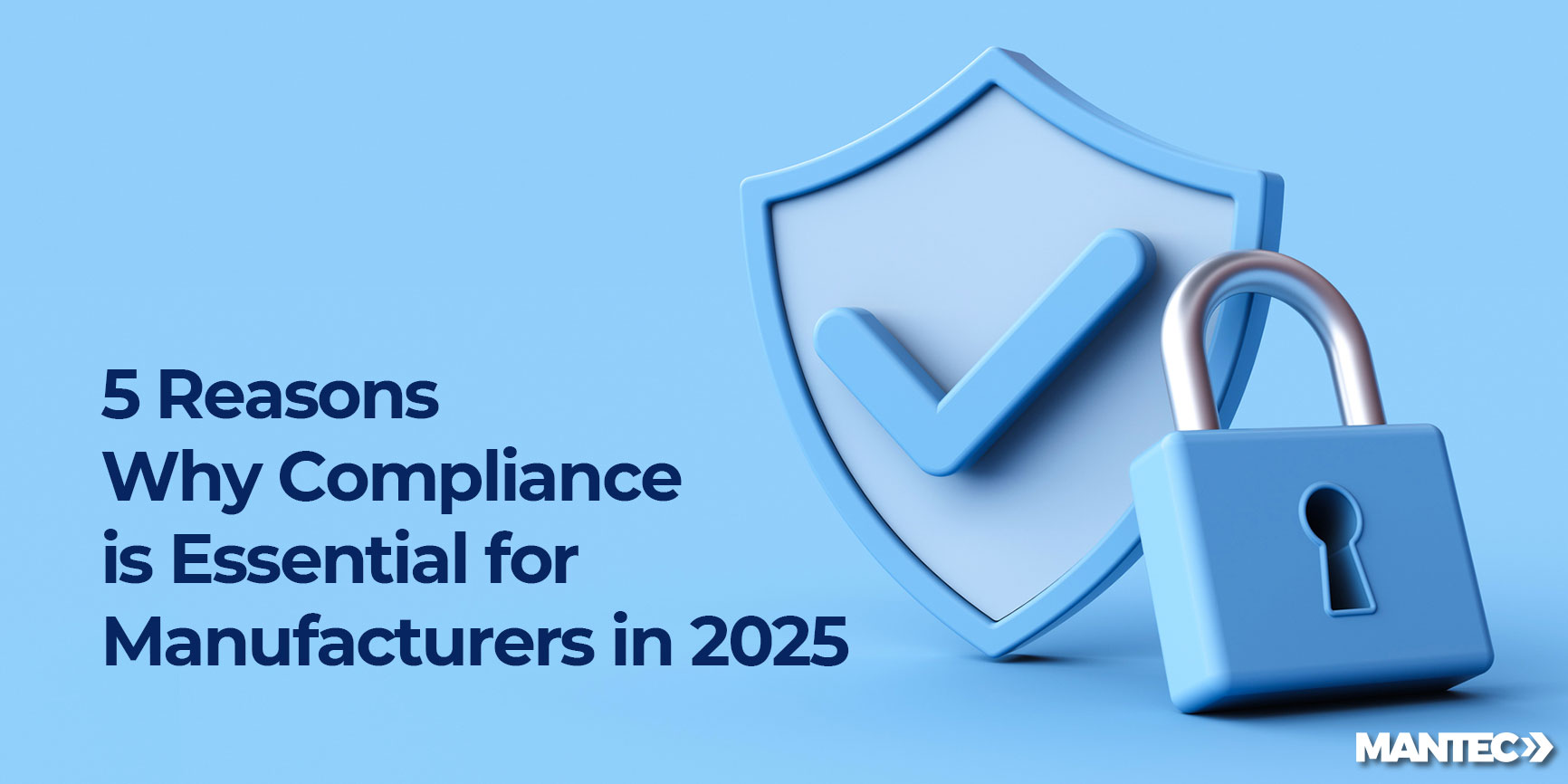In the fast-paced world of manufacturing, staying ahead often means embracing change. Soon, the only…
 As internet connectivity becomes more commonplace in the manufacturing industry, many businesses will benefit from increased convenience, productivity and efficiency. However, other concerns arise — namely, those related to cybersecurity. Though this relatively new element of manufacturing systems is beneficial for numerous reasons, it introduces the need for additional layers of protection to keep valuable information safe.
As internet connectivity becomes more commonplace in the manufacturing industry, many businesses will benefit from increased convenience, productivity and efficiency. However, other concerns arise — namely, those related to cybersecurity. Though this relatively new element of manufacturing systems is beneficial for numerous reasons, it introduces the need for additional layers of protection to keep valuable information safe.
Quick Links
The Importance of Cybersecurity in Manufacturing
Identify the Risks
How to Protect Your Company With Cybersecurity
Cybersecurity Must Be Implemented Across the Whole Company
Contact MANTEC for Cybersecurity Advice
Luckily, you can easily protect your manufacturing business by identifying security risks and forming a plan for combatting them.
The Importance of Cybersecurity in Manufacturing
Cybersecurity is crucial to the success of any business, and the same is true of manufacturing companies. In understanding why you need cybersecurity in manufacturing, it’s important to consider the ramifications that arise when a business doesn’t fully develop or strengthen their security measures. Security breaches cost money, delay operations and affect client and consumer trust.
Without the proper security measures, manufacturers can lose confidential company or industry information, which can create significant legal problems for both them and other businesses they’ve partnered with. The manufacturing industry recently suffers hundreds of security incidents every year, with many resulting in confirmed data exposure. Crimeware and web applications from external sources account for a majority of events.
In addition to those issues, non-compliance with cyber safety regulations can result in strict fines. Non-compliance is another factor that can make some companies unwilling to work with specific manufacturers. They might decide they don’t want to associate with organizations that don’t follow the latest safety precautions — which puts everyone at risk. In turn, the non-compliant business loses revenue and vital partnerships.

Identify the Risks
Once you learn the importance of cybersecurity, you might ask yourself other questions about improving your current system. How do you identify the risk factors that might affect your business? How do certain organizational structures and systems — such as the Internet of Things (IoT) — make you more or less vulnerable to cyberattacks?
One of the first steps is to identify confidential, top-level information within your business. Trade secrets, industry best practices and proprietary information are all examples of valuable intellectual property and can create major devastation if leaked. Knowing where this information is stored, both digitally and physically, is equally important in securing it. Some manufacturers might put more stock in protecting digital locations than physical ones, but both require continuous monitoring.
Some actions you might perform to identify risks include:
- Penetration testing.
- Assessing the security of your business partners.
- Cyber auditing.
- Conducting employee background checks.
Always account for unlikely scenarios. You might not expect to see a phishing email that asks for your credit card’s security numbers, and you would certainly avoid supplying the information. However, cybercriminals often rely on methods like social engineering to persuade people to lower their guards and act in ways they normally wouldn’t. Likewise, safeguarding physical entry points from disguised cybercriminals might seem excessive, but hackers often take advantage of this laxity around unusual security breaches.

How to Protect Your Company With Cybersecurity
Education and identification are essential steps to building a cybersecurity strategy. After getting equipped with this knowledge, it’s time to learn how to protect yourself with cybersecurity. Below are a few ways to strengthen your company’s strategies:
1. Implement Multi-Factor Authentication
Multi-factor authentication is a tactic that both businesses and individuals use to protect their data. It requires you to input two or more pieces of identifying information — such as a password and security question — to unlock an authentication mechanism. Manufacturers can use many platforms to implement multi-factor authentication. Before choosing any one solution, ask yourself a few questions:
- Does this solution accommodate integration with other platforms for maximum functionality?
- Does it uphold an adequate efficiency level while still providing the necessary security measures?
- Do the security tools it offers — like fingerprint scanning or personal identification numbers (PINs) — align with what your business needs?
- Does it allow you to change the identification parameters as necessary, such as when adding a remote team to your company?
2. Use a Jump Host
The IoT has made many industrial control systems more advanced than ever, connecting hardware and software in more advantageous ways. Unfortunately, this also leaves these internet-connected machines vulnerable to attack if not properly secured. Research into Siemen’s line of programmable logic controllers (PLCs) revealed that multiple devices could be controlled with a single key.
Recommendations from a security expert included ensuring that the devices were equipped with firewalls and weren’t connected to the internet. Jump hosts are another beneficial option. These connect two networks or devices within separate security zones and allow only authorized users to access the other network. By using a jump host, you create a controlled access point that only specific users can enter.
3. Use the Appropriate Security Levels
Every employee will need a different level of security depending on their device, job position and network. For example, you’d need stricter protocols in place for a worker accessing blueprints on a personal laptop at home versus a project manager doing the same on a computer within the manufacturing facility. Risk-based authentication (RBA) allows you to expand the levels of security stringency as the risk increases.
RBA platforms assess login attempts in real-time and then offer the appropriate level of authentication based on the user’s credentials. An RBA program might consider factors like the individual’s location, Internet Protocol (IP) address and the device information before deciding whether a login attempt is legitimate.
4. Ensure Proper Employee Training
The importance of employee training can’t be underestimated. Workers who don’t understand the fundamentals of your company’s cybersecurity policy are more likely to make errors that expose crucial data. If someone doesn’t know or understand the correct steps for handling an email phishing link, they could make their entire department — or the whole company — vulnerable by clicking on it.
Likewise, they might feel compelled to enter personal information if the message displays a particularly urgent tone and appears to come from a trusted source. Make sure you have a policy in place for detecting and responding to phishing emails. You should also have a set of established best practices for password creation and the use of external devices and networks. You might find it helpful to require employees to get certifications on their cybersecurity knowledge and seek re-certification on a schedule.
Cybersecurity Must Be Implemented Across the Whole Company
For cybersecurity measures to work as intended, they must be integrated within the entire manufacturing company rather than just one or two departments. Leaving any gaps in your strategy opens up access points for attackers and allows your employees to go uninformed about the proper security protocols. Although your entire facility might not be IoT-connected, hackers can still infiltrate non-connected devices or look up information about them.
A comprehensive security risk assessment, along with other measures outlined here, is a good way to sweep through the entire business and pinpoint possible dangers that could arise later. When you know what issues you’re facing, it’s easier to pull together an effective, thorough plan and implement it throughout the company.
Proper integration also means making your cybersecurity policies are easy enough for anyone to understand. Anything that’s too unwieldy or complicated can discourage workers from participating, especially when it comes to lower-level employees who don’t have experience with IT affairs. You know the significance of having a strong security system — your workers must know it too.
Contact MANTEC for Cybersecurity Advice
 If you own a manufacturing business in South Central Pennsylvania and need more information on how to implement an excellent cybersecurity strategy, reach out to MANTEC. We provide expert advice, consulting services, cyber awareness training and a library of both internal and external resources. Protecting your business and employees is the best thing you can do to keep your company successful. With our qualified solution providers and decades of experience, MANTEC can help you achieve that.
If you own a manufacturing business in South Central Pennsylvania and need more information on how to implement an excellent cybersecurity strategy, reach out to MANTEC. We provide expert advice, consulting services, cyber awareness training and a library of both internal and external resources. Protecting your business and employees is the best thing you can do to keep your company successful. With our qualified solution providers and decades of experience, MANTEC can help you achieve that.


